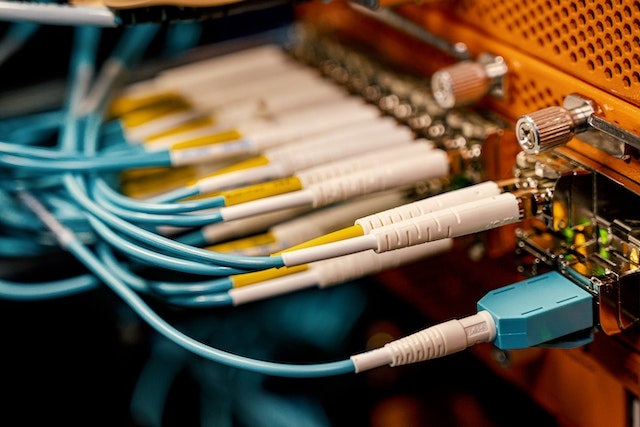An optical cable is a type of specialized device that carries information over long distances using light signals. It consists of thin plastic or glass fibers that are arranged in a protective sheath. The optical fiber’s core is the region where light travels. It’s surrounded by a layer of cladding that has a lower refraction index. This design helps keep the light focused on the core, which prevents it from scattering or interfering with the signals.
Today, optical cables are becoming the preferred choice for high-speed data transmission and connectivity. They have revolutionized how we communicate, and they’re outshining copper wires in many aspects. Some of the benefits of optical cables include:
1. Unmatched Speed and Bandwidth
With a bandwidth capacity of up to 24 Gbps, a fiber optic cable is capable of delivering a vast amount of data. Unlike copper wires, which are prone to electrical resistance, optical cables are powered by light. Because of their high-speed capabilities, optical cables can deliver a wide range of immersive experiences and file transfer rates. They allow us to enjoy the latest and greatest digital content with remarkable efficiency.
2. Longer Transmission Distance
Another advantage of using optical cables is their ability to carry data over long distances. When using copper wires, you’re prone to experiencing signal loss. Conversely, the signals being sent by fiber optics are strong and clear as they travel across vast distances. This is important for modern communication systems, such as internet connectivity and global networks.
3. Immunity to Interference
Electromagnetic interference can affect the quality of a copper cable’s signal transmission by coming from electrical devices, power lines, and adjacent wires. This issue can result in slower speeds and data corruption. On the other hand, fiber optical cables are dielectric, which makes them immune to EMI.
Unlike copper wires, optical cables do not rely on electromagnetic fields to transmit light signals. This ensures that they can provide a consistent and robust transmission even in areas with high electrical noise levels. Fiber optics are ideal for industrial applications as they are impervious to EMI.
4. Enhanced Security
Data transmission is a vital component of today’s interconnected world, and security is a must. With the use of copper cables, unauthorized access to your data may occur. An inherent security feature of fiber optics is that they do not emit detectable signals.
Tampering with the cables of fiber optics can cause a noticeable signal disturbance, which can be immediately detected by the network’s administrators. Fiber optics are commonly used in various secure networks, such as government and financial institutions.
5. Durability and Reliability
Unlike copper cables, which are prone to various environmental factors, such as moisture, corrosion, and temperature fluctuations, fiber optics are impervious to these issues. They can be used in harsh environments, such as underwater and underground, without compromising their performance. Their light and slender design makes them easy to install, and they can be used in various applications without damaging them.
Top Uses for Optical Cables
Due to their unique properties, optical cables are widely used in various sectors. Here are some of their top applications.
1. Telecommunications
Modern telecommunications networks rely on optical cables to carry high-speed data over long distances. They are mainly utilized for connecting continents, cities, and countries. Besides serving the communication needs of mobile and fixed-line networks, optical cables also support video, voice, and data transmission for internet service providers and telephone networks.
2. Internet Connectivity
An optical cable is a vital component of an internet connection at your home and office. Compared to copper-based networks, fiber optic cables deliver faster and more reliable connections. They can also provide users with smooth and fast streaming of videos and other demanding activities.
3. Cable Television
In cable TV networks, optical cables are utilized to transmit audio, data, and video signals. They can deliver a wide range of channels and offer enhanced features for users, including support for high-definition content.
4. Medical Imaging
In medical imaging, such as laparoscopy and endoscopy, fiber optic cables are used to transmit high-quality videos and images from instruments to monitors. They can provide surgeons and other healthcare personnel with an updated view of the operation. In addition, medical data is transferred between different facilities through the cables.
Final Thoughts
Since fiber optics have revolutionized data communication, they have outpaced copper in almost every aspect of the communication industry. The numerous advantages of this type of cable, such as its high-speed transmission, reliability, and immunity to interference, have led to it becoming a standard component of modern connectivity.








